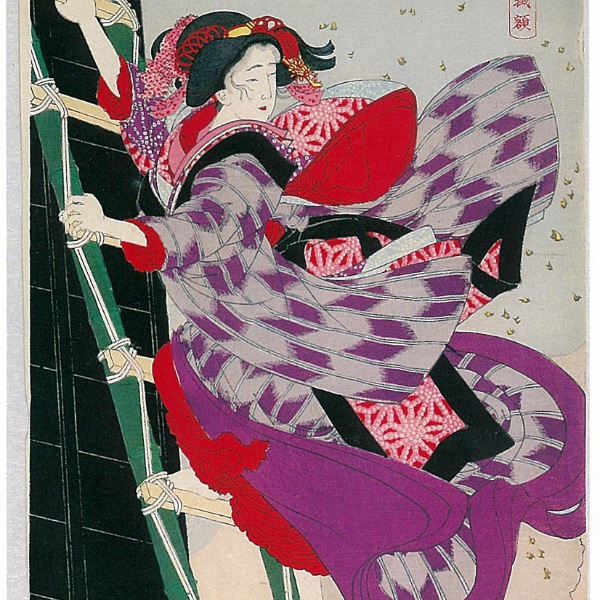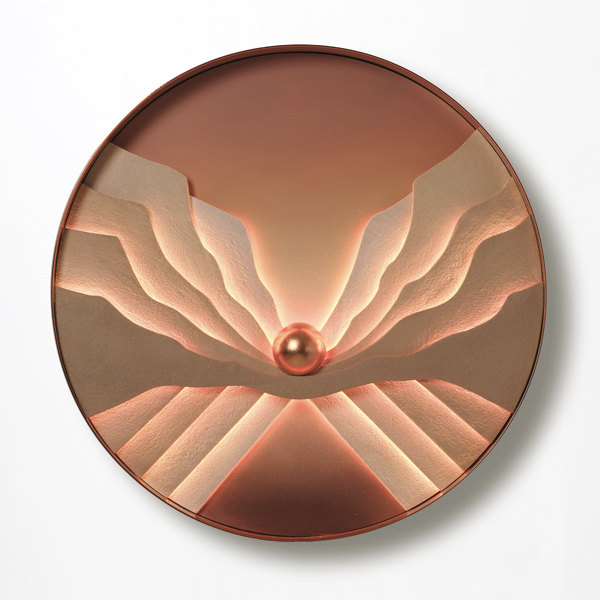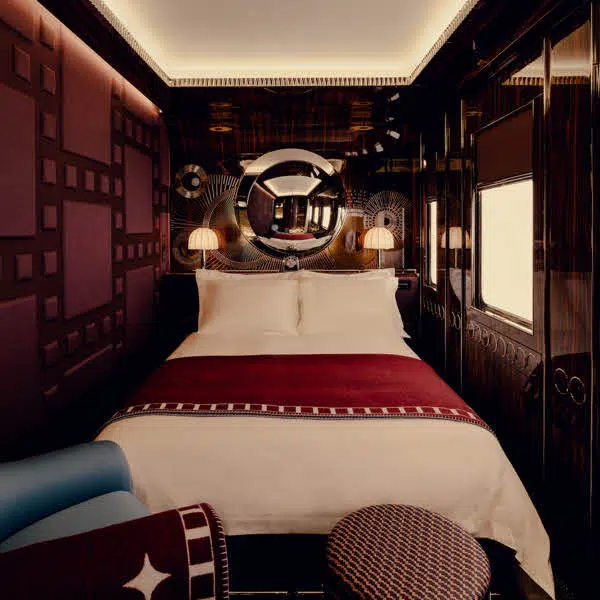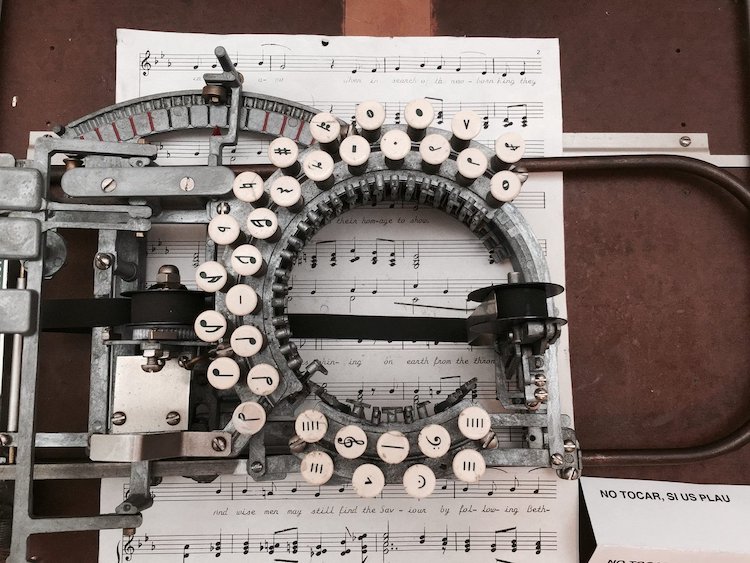
Photo: Marcin Wichary
While most composers like to handwrite their sheet music, over the years there have been all types of machines invented to help print music. Perhaps one of the coolest is the Keaton Music Typewriter. First patented in 1936, it definitely doesn't look like an ordinary typewriter. Robert H. Keaton from San Francisco, California created the machine, which has now become something of a rare collector's item.
The original patent was for a 14-key typewriter, which was then upgraded to 33 keys in an improved 1953 patent. Marketed in the 1950s and sold for about $255, the machine has a distinct look thanks to its circular keyboard. In creating his design, Keaton was looking to create something that would be able to print characters precisely on a staff and indicate exactly where the next character would be printed to ensure accuracy.
The unique keyboard arrangement was born of a desire to separate two types of characters. “One keyboard is adapted to type one class of music characters such as bar lines and ledger lines, which, when repeated, always appear in the same relative spaced positions with respect to the [staff] lines… and a second keyboard adapted to type another class of musical characters, such as the notes, rest signs and sharp and flat signs etc., which may, when repeated, appear in various spaced positions with respect to the [staff] lines,” Keaton wrote.
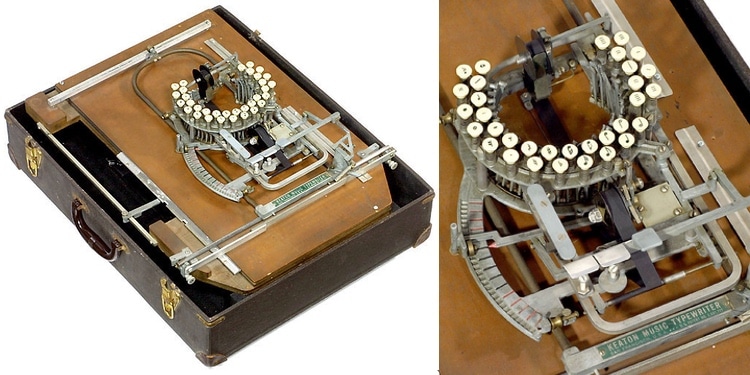
Photo: Live Auctioneers via Music Printing History
It's an interesting arrangement that gives the Keaton Music Typewriter its distinctive look. In terms of engineering, thanks to a curved meter on the left that Keaton called the Scale Shift Handle and Scale Shift Indicator, it's easy to control exactly where the notes and characters fall on the page. By moving the handle up or down a notch, the typewriter adjusts to print 1/24 inch in either direction. Moving one notch up or down will cause the character to fall one musical step either way.
In order to make sure that musicians could see where they were about to print, Keaton included a long needle next to the ribbon that leaves nothing up to chance. Interestingly, the two keyboards work in different ways with the Scale Shift Handle. The larger keyboard with the notes, scales, sharps, and flats moves freely in tandem with the Scale Shift Handle. The smaller keyboard, which contains items like bar lines and ledger lines, stays in place since these characters always appear in the same place with respect to the staff lines.
Due to the niche nature of the product, it's unclear if it was a big commercial success. Now, the Keaton Music Typewriter is a beloved collectible and can sometimes be found on eBay as well as other online auctions. Its beautiful design and nostalgic appeal for the pre-digital era certainly make it an invention worthy of rediscovery.
The distinctive Keaton Music Typewriter was produced in the 1950s to make it easier for musicians to create legible sheet music.
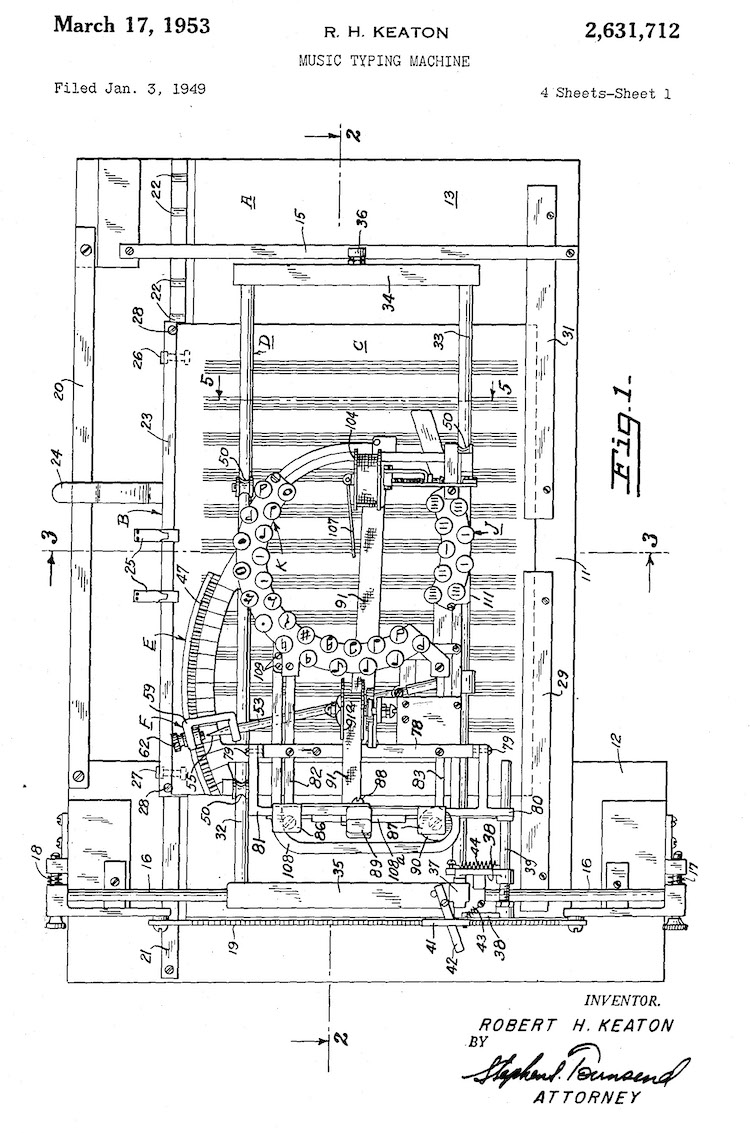
Drawing in 1953 Patent
It's now a beloved collectible by musicians and lovers of innovative design.
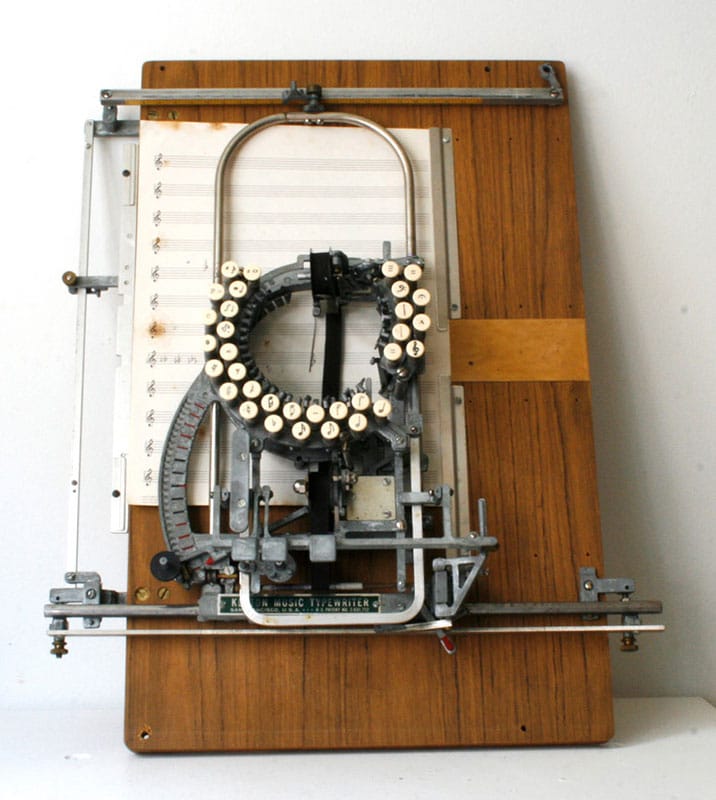
Photo: SATElostangeles
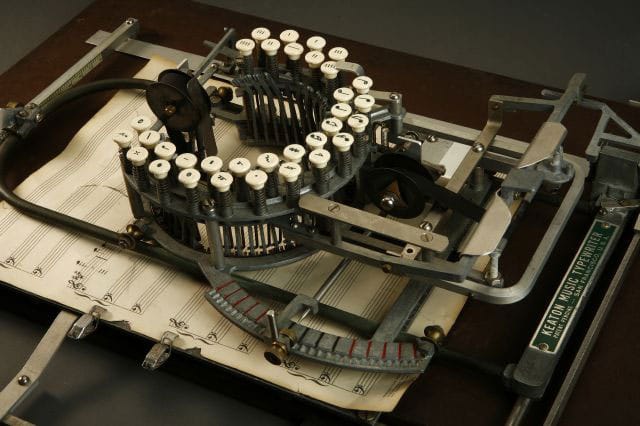
Photo: Music Printing History
Watch this short demonstration to see the music typewriter in action.
h/t: [reddit]
Related Articles:
Iconic Objects of the Past “Dissected” Into Incredible Suspended Sculptures
How the Development of the Camera Changed Our World
1937 Typewriter Modified to Create Colorful Works of Art
Hollowed Out Book Discovered as 16th Century “Assassin’s Cabinet”











































































